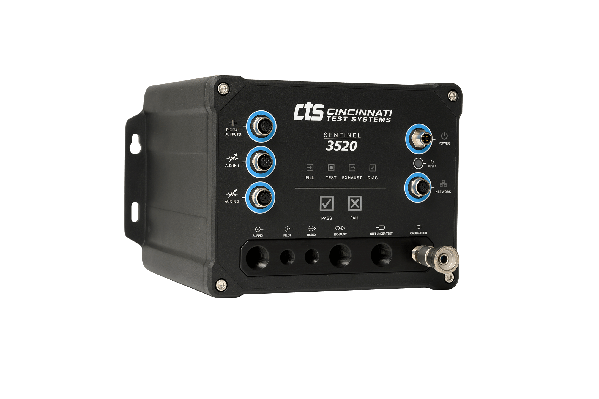The success of any leak test rests with understanding how to control your variables. The larger the part volume, the more pronounced these variables can become.
Why? Larger cavities require larger volumes of air to be pumped into them to conduct the test. The more air that is compressed into a cavity, the more its temperature increases. These temperature shifts, called the thermal effect, can warm the part and cause expansion of its materials, leading to unreliable test results. Attempting to counter this effect by taking longer to fill the part to the desired test pressure, or waiting for the thermal effect to abate on its own, may leave the test cycle taking too long to keep pace with production.
Below are some of the common variables that come up with large volume leak testing and how best to address them.
The test cycle can be shortened by using a high-pressure fill to achieve the desired test pressure faster. But again, this rapid compression of air can result in that undesired thermal effect.
Also bear in mind that the lower the target leak rate and the larger the part volume, the longer it takes to conduct the test. With a lower target leak rate, it becomes more difficult to detect an undesirable leak if the part’s temperature isn’t yet stable.
So, how can we achieve the desired cycle time without compromising accuracy? The answer lies in controlling your other variables, as follows.
When you can chart and accurately predict the rate of thermal stabilization, it then becomes possible to extrapolate the true leak rate without having to wait for the stabilization phase to complete. This helps you achieve an efficient test cycle time to keep pace with the production line, without sacrificing accuracy. Our Sentinel 3520 leak test instrument is optimized to address the unique challenges of large volume leak testing regardless of whether you use pressure decay or mass flow as your testing method.
Our Sentinel 3520 leak test instrument is optimized to address the unique challenges of large volume leak testing regardless of whether you use pressure decay or mass flow as your testing method.
Read how this agricultural equipment manufacturer turned to the Sentinel 3520 to improve Gage R&R with its large volume transmission leak test.
Why? Larger cavities require larger volumes of air to be pumped into them to conduct the test. The more air that is compressed into a cavity, the more its temperature increases. These temperature shifts, called the thermal effect, can warm the part and cause expansion of its materials, leading to unreliable test results. Attempting to counter this effect by taking longer to fill the part to the desired test pressure, or waiting for the thermal effect to abate on its own, may leave the test cycle taking too long to keep pace with production.
Below are some of the common variables that come up with large volume leak testing and how best to address them.
Achieving ideal cycle time
Test cycles that take too long to determine pass/fail will cause a bottleneck on the production line. This may necessitate the setup of a parallel test station – hardly ideal, considering the costs involved.The test cycle can be shortened by using a high-pressure fill to achieve the desired test pressure faster. But again, this rapid compression of air can result in that undesired thermal effect.
Also bear in mind that the lower the target leak rate and the larger the part volume, the longer it takes to conduct the test. With a lower target leak rate, it becomes more difficult to detect an undesirable leak if the part’s temperature isn’t yet stable.
So, how can we achieve the desired cycle time without compromising accuracy? The answer lies in controlling your other variables, as follows.
Achieving test consistency
By consistency, we mean precise regulation of the supply pressure. We accomplish this with modern digital instrumentation and data analytics on the test stand. This ensures that your rate of fill is always the same and you have constant control of the fill.
With this level of control, it’s possible to do a “ramped” fill, where we set a start and end pressure, and a duration, to reach a desired test pressure faster.
Having a constant and reliable supply pressure is key to controlling consistency.
Determining leak rate
Precise pressure regulation and a stable supply pressure delivers consistency in your measurement and enables you to accurately gauge how long it will take for the test part to achieve thermal stabilization.When you can chart and accurately predict the rate of thermal stabilization, it then becomes possible to extrapolate the true leak rate without having to wait for the stabilization phase to complete. This helps you achieve an efficient test cycle time to keep pace with the production line, without sacrificing accuracy.
Other considerations
Internal volume and geometry
Many large parts have complex internal geometries or constrictions. Rather than trying to force air through one charge port, it may be more efficient and contribute less to a thermal effect if you fill the part through two or more ports on opposite sides of the constriction.Part materials
Different materials, and different thickness of the material, will absorb and retain heat, or cool off, at different rates, depending on the ambient air temperature. All these variations must be understood and compensated for to accurately predict the rate of thermal stabilization and achieve a reliable and repeatable test.Where the part has been
Disruptive thermal effects can already be in play before the part even arrives at the test stand. Has the part been sitting in cold air prior to the test? Is it coming from a previous process like a weld or a wash that may have heated it up? Don’t forget to factor in these variables for a reliable large volume leak test.See how CTS approaches large volume leak testing
 Our Sentinel 3520 leak test instrument is optimized to address the unique challenges of large volume leak testing regardless of whether you use pressure decay or mass flow as your testing method.
Our Sentinel 3520 leak test instrument is optimized to address the unique challenges of large volume leak testing regardless of whether you use pressure decay or mass flow as your testing method. Read how this agricultural equipment manufacturer turned to the Sentinel 3520 to improve Gage R&R with its large volume transmission leak test.


